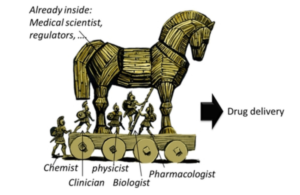
This post gives the content of a public lecture organized by Dan Johnson and Jennifer Williams – see In Memory of Dexter Johnson. The slides and text are below.
There are two video recordings – the official version is by Thomas Paul which is White Coat Storm. A just to be safe second version – Beware Doctors Bearing Gifts – was done given the problems Tom had to juggle with for the original recording. There are slight differences between them but Tom’s is the better version.
Beware Doctors Bearing Gifts
Usually at this point a speaker says it’s good to be here. It is good but in this case it’s also emotional.
Slide 2: I will mention the Blackfoot and other First Peoples at the end of the talk but first I want to acknowledge a brave man – Dan Johnson sitting here – and his son, Dexter, who, when he was 15, was put on Prozac, without Dan knowing it, became worse, the dose was put up, Dexter got worse , the dose was put up and he became suicidal – and the dose was put up. Dexter died just over a year ago. From the records I’ve seen it seems evident that Prozac killed Dexter. I’m here as part of Dan’s search to find out how this could happen.
Slide 3: You will likely guess the Title of this Talk is linked to the Trojan Horse. The key word is Gift as will become clear later in the talk.
Seeing a title like this and hearing me say that the Art of Medicine involves bringing good out of the use of a poison, you would be forgiven for thinking I am anti-drugs or the medical model. Just the opposite, I believe in using medicines but the skillful use of drugs involves knowing when not to use them.
Slide 4: At the end of last August, the New York Times had a feature about American teens ending up on 10 or more psychotropic drugs. Hundreds of people commented on the accuracy of the article – even the New York Post, who never agree with the Times.
But while everyone agreed on the state of affairs, no one pinpointed why this is happening. This lecture will try to shed light on the Why.
Slide 5: The chain of events that led to our children being put on these drugs and that killed Dexter began 30 years ago with this paper, in which 3 clinicians claimed fluoxetine caused 6 people to become suicidal. Their claim was based on analyzing the cases closely and followed traditional clinical approaches for determining cause and effect. The cases were people who survived and could talk to them – they did not include a 14 year old boy who killed himself on Prozac.
Slide 6: Ten or more other groups reported similar findings, including this group from Yale who reported on 6 children becoming suicidal – 6 from 42 which is one in every seven children.
Slide 7: I contributed to this debate, outlining the cases of 2 men, challenged with an SSRI, with the problem clearing on dechallenge and coming back on rechallenge. There was no other way to explain what happened except that fluoxetine had caused it. This was Evident Based Medicine.
Slide 8: Almost the week my article came out, an article by Eli Lilly, the makers of Prozac, claimed that an analysis of their clinical trial database showed no evidence fluoxetine made people suicidal. The cases reported were sad but anecdotal and the plural of anecdotes is not data. Depression was the problem not fluoxetine. Clinical trials are the science of cause and effect. The question to doctors, the public, the media, politicians was – are you going to believe the science or the anecdotes?
Lilly’s article created what we now call Evidence Based Medicine.
In fact, the original phrase is the plural of anecdotes is data – otherwise Google wouldn’t work.
The idea the disease was responsible for suicide attempts and suicides in healthy volunteers is hard to believe but companies can get experts to claim just that.
My aim is to show you the Evident Based earlier papers are the science – the Lilly paper is the Artefact.
I will not dwell on the fact that Lilly cooked the books – even their trials showed Prozac caused suicide. It’s important you know Lilly’s Data lined up with your and my Evident Based judgement calls.
But even if done by Angels, my position is that RCTs can be useful but are a blunt instrument compared to the sensitive judgement calls you and I have to make.
My problem is that unlike you and I who figure RCTs can be useful, Lilly are saying here that we have no right to make judgement calls. Lilly are proposing a new religion where you and I have to believe in them. To add to our problem drug regulators, guideline makers, Justin Trudeau, Joe Biden and the Pope go along with them not us.
At present health is being standardized and this festoons antidepressants with numbers. Data. This looks like science but isn’t. You as patients and I as a doctor make judgments and choices about medicines – these cannot be standardized. They don’t come with numbers and do not look like science but are.
Slide 9: We often contrast the Art and Science of Medicine. Those in the soft human sciences contrast their rich qualitative context with the experimental context, where hard scientists eliminate confounders. This Janssen Advert assumes doctors will figure that paying heed to the soft side of things is a touch twentieth century.
My argument is the Science of Medicine lies in making hard judgement calls not in a made by algorithm Artefact – RCTs. Adhering to the artefact dooms Us. By Us I mean the chance of a community. Following the Artefact isolates and alienates doctors and patients from Us.
Making judgments about a medicine is not just science – it’s a moral enterprise.
Slide 10: So what is science? The usual story about the origin of science points to the foundation of The Royal Society in 1660. This established the ground rules of Science.
The ground rule was the Society did not deal with theology or philosophy – it dealt with things that could be settled with data. Whether you were Xtian, Hindu, Jew, Muslim, or Atheist, you left these badges at the door and had to explain what you saw happening in the apparatus in front of you without appealing to a Book or Authority. You could run the experiment again, adapt the apparatus, check it out for tricks – but you couldn’t refuse to come to a Verdict about the data.
The way this history is told focusses on the Data part of Settled by Data. I will focus on Settled.
Slide 11: This account of our history overlooks an equally important event 44 years earlier, when Walter Raleigh had his head chopped off – supposedly for being too close to those pesky Europeans. Raleigh was convicted on the basis of things said about him by people who did not come into court to be cross-examined.
Legal systems worldwide recognized the injustice of this and introduced Rules of Evidence. Hearsay could not be used as evidence. The only evidence that can be used in court is material that can be put in front of jurors who can see the people or material being examined and cross-examined. The process of forcing 12 people with very different biases to come to a Verdict about what is in front of them is the essence of science.
Verdicts and diagnoses are provisional – the view that best fits the current facts. If the facts change, we reserve the right to change our mind. This might appear to contrast with the objectivity of science, but scientific views are similarly provisional. Scientists attempt to overturn verdicts with new data.
If years ago, I gave an SSRI to Jennifer and she became suicidal. I can examine and cross-examine her, run lab tests and scans, raise the dose, stop the drug, add an antidote, check with colleagues has anyone else seen anything like this or can they explain it other than blaming the drug.
If Jennifer and I conclude the drug has caused the problem and report this to FDA or Health Canada, the first thing the regulator does is to remove her name. No-one can now examine or cross-examine her and come to a scientific view about whether there is a link or not. Her injury has been transformed into Hearsay.
If Dan is trying to take a case about Dexter and says look there are 10s of 1000s reports of the suicides on SSRIs on FDA’s adverse event reporting system, he cannot bring this evidence into court because no-one can be brought into court. It’s Hearsay, not evidence.
Company assays are all Hearsay. In company trials no-one can be brought into Court to give evidence – the patients don’t always exist and not even the apparent authors as you will see wrote the papers. Names count. Jennifer in this case is the data and accessing the data means accessing her.
If Jennifer and I report her case in a medical journal, with our names on it, either of us can be brought into Court. This is the best evidence we currently have in clinical psychiatry.
Slide 12: Matt Miller, a 13 year old boy committed suicide a week after being put on Zoloft. He became agitated on the drug and hung himself in the bathroom between his parent’s bedroom and his bedroom. It was Evident the Zoloft killed him.
Pfizer sent investigators to comb the carpet of the room for semen – they wanted to argue this was auto-erotic asphyxiation gone wrong – in a 13 year old boy. The judge said this was crazy but she had been told that Clinical Trials had to show the drug could cause the problem before you could blame it.
Slide 13: A set of independent experts said that Pfizer’s Zoloft trials show no evidence of this problem. This was baloney – the publications didn’t show a problem, but the Pfizer data like the Lilly data did. The court however wouldn’t let the data in. Three years later the data forced FDA to put a black box warning on Zoloft for suicide.
Why am I showing you a slide of a Plaster Cast. Well, if you break a limb and go to an ER and they say they are running an RCT- randomly assigning a plaster case to one of your 4 limbs – not necessarily the broken one – the plaster cast will beat placebo. Practicing medicine on the basis of this Evidence rather than on the basis of the Evident correct thing to do would be – crazy.
Slide 14: The events leading to Dexter’s death came more clearly into view in 2001 with this article which has an authorship line to die for, including a Canadian Liberal Party Senator, Stan Kutcher. It’s in the Journal with the highest impact factor in child psychiatry. This is Study 329 a trial of paroxetine in pediatric depression. The paper claims it works wonderfully well and is safe.
This was a good study, run to high standards. What I am about to tell you essentially applies to all industry trials across medicine.
Slide 15: Three years earlier, in 1998, GlaxoSmithKline were mulling over this internal document which says Study 329 was negative for efficacy and safety. What were they going to do? They were going to pick out the good bits of the data and publish them. The good bits formed the Keller et al 2001 paper.
This 1998 document led New York’s Attorney General to file a fraud action against GSK. As part of the resolution of this, GSK agreed to make their paroxetine trial data public. A decade later, GSK resolved a Dept of Justice action, which also involved Study 329, for $3 Billion dollars.
Slide 16: After the $3 Billion settlement, a team of us got together to Restore Study 329. We had more of the raw data on this study than FDA or Health Canada had seen for any study.
Slide 17: The 8-week acute phase of the study showed no difference between paroxetine, imipramine, and placebo. Ditto for the never published 6 month continuation phase.
Slide 18: Paroxetine had over 500 side effects in 93 teens. The Keller paper admitted to half of these. Keller noted 6 emotionally labile events in the trial, some of which might have been suicidality, 4 on paroxetine. But in our hands roughly a fifth of the children on Paxil had a significant behavioural event mostly suicidality.
Slide 19: Suicide is not what I want to focus on. It’s the ability of company studies to hide adverse events. Before going there, just note the 3 sentences here on the right – these are the last 3 sentences of the paper and quite unlike anything you will find anywhere else.
Slide 20: Our paper lists 10 ways to hide things – I will focus on 3. Coding is top of this list – this is the first act of authorship but no one pays any heed to it. You’ve seen GSK use emotional lability to hide suicidal events.
In a Pfizer trial around this time a man on their drug got agitated, poured petrol on himself and set fire to it intending to kill himself but he only died from his burns 5 days later. You can code him as death by burns or suicide. If the coder opts for death by burns, the data will look very different. This is a real example – just as emotional lability was.
Slide 21: There is a small chance that FDA will have found out about this man dying from burns because if you have to go to hospital or die companies had to file a report outlining just what happened and this man dying form burns had a report like this.
But in Study 329, a 15 year old boy on Paxil was out on the street waving a gun and threatening to kill people was brought to hospital by the police and there was no one page report. There was nothing to tell Health Canada or FDA what happened because companies had found a loophole that lets them legally avoid filing these reports. I accidentally found out what happened. But companies are still using this trick in all their trials to this day and regulators don’t seem bothered to close the loophole.
Slide 22: Second, about 15% of events in the raw data disappeared because they were not transcribed to the final company study reports.
Now let me take you to grouping. If you have 500 events in 93 children on Paxil, rather than list them all, they are usually grouped under say Cardiac or Gut. In the case of behavioral events, these could be put under Neurological or Psychiatric Events. GSK grouped all behavioral events under Neurological. This groups emotional lability with headaches and dizziness, which are very common and grouped this way behavior problems disappear. Put behavioral events into a Psychiatry group and all of a sudden you see the problem.
Slide 23: Studies usually have 2 reviewers and 1 round of reviews. Restoring Study 329 had 7 reviewers and 7 rounds of reviews. It took over a year to get it published. We were having problems not with the reviewers but with the BMJ research editor, Elizabeth Loder, who blew a fuse every time we tried to move behavioral events out of the Headache group and into a Psychiatry group.
Turns out Dr Loder is a neurologist and Headache expert. She has worked on GSK’s migraine and headache meds. She also has a husband, who is a lawyer and worked for the law firm that defended GSK in their $3 billion Dept of Justice case. When we pointed this out, the article was accepted.
Slide 24: The full story of Study 329, with the document you have seen, and one you will see soon, and many others are all on this Study329.org website.

Slide 25: The story is also in Children of the Cure.
Slide 26: In World Mental Health Week October 2002, the front cover of Newsweek looked like this. 3 million teens in the US were depressed and would go on to a life of alcohol and drug abuse, divorce, job loss, suicide etc but there is hope, FDA have approved Prozac for children who are depressed and are about to approve Paxil and Zoloft.
Slide 27: Now many of you will know that Paxil and Zoloft did not get approved – Prozac is the only drug approved for children. Well here in 2002, is part of an approvable letter FDA sent GSK for paroxetine in pediatric depression. This says GSK have told them Study 329 is negative. FDA agree its negative – in fact all 3 trials are negative. FDA will still approve Paxil for kids. FDA also agree with GSK’s suggestion it would be better not to mention the negative trials in the label of the drug. Why would FDA agree to this?
Slide 28: This slide from Erick Turner’s famous 2008 article shows published adult ‘trials’ on the various antidepressants we know and use. Almost all indicate the drugs work well and are safe.
Slide 29: Another slide shows the trials as FDA viewed them. There were unpublished negative trials but also one third of trials reported as positive were viewed as negative by FDA. Why would FDA not point this out? Perhaps it was clear to companies and FDA they could get sued for fraud and fined if FDA said these claims for positive effects were not in their opinion correct. FDA’s view is that is not their job to police the medical literature.
Slide 30: From the 1980s companies took the running of assays out of the hands of people like Paul or me and gave it to Contract Research Organizations (CROs) now a $40 billion business. The writing of articles was given to Medical Writing companies. The true author of Study 329 is not listed among the 24 or so authors you saw on that paper.
What does that mean? Here you see the PTSD page of a 30 page document listing Zoloft articles in progress. These aim at capturing markets not at informing you how to use Zoloft safely. You see on the right two articles are complete and will be sent to the very best journals – on the left you see TBD – to be determined – when Pfizer decide which names would sell most Zoloft.
Pfizer did 4 Zoloft PTSD trials. All negative. But 2 had a minimal benefit for women – these good bits plucked out are what’s being published. This is the basis for FDA approval of Zoloft for PTSD.
Slide 31: Some years ago, Britain joined the EU and ran into trouble. They were told that their favorite Cadbury’s chocolate could not be called chocolate. It didn’t have the right quota of cocoa solids. British consternation over Chocolate and Red Tape led to Brexit some decades later.
What’s going on? The clue is in the name – FDA regulate Food and Drugs. Faced with butter or chocolate or drugs, companies must meet an assay standard – so much cocoa solids, animal fats for butter, or so many points on a Depression rating scale in 2 trials. Meet that and FDA let you use the words chocolate, butter, or antidepressant. It’s not their job to decide if this is good butter, or if chocolate is good for you, or to police the drugs literature.
Slide 32: Where does this leave us? Back in 2016, BMJ featured Jeremy Hunt, then the UK Minister of Health. He was saying then that:
Children’s mental health is possibly the biggest single area of weakness in NHS provision at the moment.
This is hardly surprising, given that it had become clear in 2004 the entire pediatric antidepessant literature was company written and constitutes the greatest divide between the published claims – the drugs work wonderfully well – and what the data show in any branch of science that I know of.
Slide 33; What about Prozac? Well FDA reviews of Prozac trials were also negative but you have seen they were willing to approve Paxil on the basis of negative trials.
Slide 34: As this Peanuts cartoon shows – at one level the risks of Prozac have been known for a long time. This cartoon I think is at least 20 years old.
Slide 35: Prozac – and other drugs – can give you horrific thoughts of harming yourself or others that you would never have otherwise had. We have known this since the 1950s.
Slide 36: But it and other SSRIs can cause an emotional numbing that may be helpful but can also be dangerous.
Slide 37: Lucy knows this – why not all of us? Well in particular with Prozac repeated statements that Prozac unlike other SSRIs has been approved by regulators has numbed doctors to the dangers of what they are doing.
Slide 38: When I was a teen it was accepted we often went half-crazy as we adapted to a crazy world and how to navigate it. It was thought important for us to go through this, as Homer tells Bart.
If Homer said this today. Bart would reply – Dad that’s so twentieth century. I filled a rating scale and I know I’m depressed. My friends all tell me these drugs work really well.
As a result or rating scales Greta Thunberg and her generation, who are doing great things to stop us pumping chemicals into the environment, are pumping more chemicals into their inner environment than any prior generation.
Slide 39: The first behavior rating scale was the Hamilton Rating Scale for Depression. Produce a drop on this scale and FDA will let you call your drug an antidepressant even if more die on it than on placebo in the company’s trials.
Here is Max Hamilton saying:
It may be that we are witnessing a change as revolutionary as was the introduction of standardization and mass production in manufacture. Both have their positive and negative sides
He saw the scale as a checklist of things to ask about in an interview. What could be negative about that?
Slide 40: If you cleave to the checklist, you will do standardized but possibly disastrous interviews. For instance, on the Hamilton scale, there is a suicide item. Suicidality can stem from the illness or the drug. This needs a judgement call – if caused by the drug you should rate the person as Zero – if caused by the illness you might rate 3 or 4. Ditto for sex, or sleep, or agitation. If you just check yes for sex or suicidality, the default is to the illness. And an increased score will lead to an increase in the dose of the drug.
Checklists like these however are now viewed as scientific instruments. They look better to hospital managers than me asking you about the football last night or your family.
Up to 1980, the job of a doctor was to help solve some problem you brought in order to help you get on with the life you wanted to live. For drug companies, rating scales ensure you do an interview that produces figures which will help me to help you to live the life Pfizer want you to live. Do this and I am no longer practicing medicine.
Slide 41: I mentioned the New York Times story on teens taking up to 10 psychotropic drugs offers no explanation for how this was happening.
Well here’s one clear pathway – a teen on an SSRI becomes suicidal, gets told this shows she is bipolar and needs a mood stabilizer. Gets given an antipsychotic – the purpose for which is to reduce her focus.
She comes back two weeks later and mentions she is not focusing as well. The doctor gives her an ADHD rating scale and sure enough she checks the focus questions and has ADHD so he puts her on a stimulant – which does exactly the opposite to the antipsychotic that is causing the loss of focus.
This is like getting her to step on a weighing scale and then putting a 25 kg dumbbell in each hand, and saying Gosh you are 50 kg overweight, let me give you an appetite suppressant drug. Its as crazy as that.
Slide 42: This is true for any measure – peak flow rates, bone densities, blood pressure or lipids, or sugar. Your figures will prompt you to seek and your doctor to give you a medicine – your figures get you to live the life Pfizer or GSK want you to live.
Up until the 1980s, people brought their problems to us – seeking help to live the lives they wanted to live. After that we began to give them problems with their lipids and other risks and the amount of medicines consumed rose dramatically. We began treating numbers rather than people.
A stopwatch can be a wonderful motivator to achieve a dream – breaking the 4-minute mile barrier. It’s great if we can remain on top of the from one fraction of our lives it provides. But just after weighing scales were introduced in France in the 1860s, we got the first descriptions of anorexia nervosa. In the 1920s, weighing scales migrated to drug stores with norms for ideal weight for our height and sex attached to them and eating disorders mushroomed. They migrated into our homes in the 1960s and eating disorders became epidemic – in the countries that had weighing scales.
Measurements risk becoming an illness. They make us and our doctors neurotic.
Slide 43: There is an extra element to the equation. The Service industries emerged in the 1950s. Through to the 1980s, no-one viewed health as a service industry. They do now. Service industries have managers and health got managers.
Before that a doctor’s exercise of clinical discretion was a jewel in the crown of Care. Now it became a problem for those who manage services and medical contracts in many places now stipulate that we adhere to Guidelines that in the case of drugs are deeply problematic.
Before that we handled the risks your condition posed to you – now you can palpably feel that we are managing the risks you pose to the organization we work for rather than mobilizing the organizations resources to help you.
Slide 44: Managers manage what they can measure. The measurements have a sheen of scientific gold but are killing Care –
We are rerunning the King Midas story.
Slide 45: Central to the death of Care is an unwillingness to let people make judgement calls in respect of their own lives. This cartoon captures the issues. It’s now a scandal to exercise Judgement. The magic of medicine used to lie in bringing good out of the use of a poison – based on a judgment call. Because we have no say any more, poisons have become sacraments – a sacrament is something that can only benefit – it cannot harm.
I had a younger brother. Soon after his birth, my mother told the doctors there was something wrong. They ran tests and told my father there was nothing wrong, she was neurotic and give her these pills. She was right. He died at 4 months old.
When I ended up in medicine, the climate had changed and we were told even if all the tests are normal, believe the mother. I thought this new approach would extend across all of medicine but now White Middle-Class, University Educated, Liberal voting women lead the way in consuming more medicines in pregnancy than any other group of women. Seeking help for their children and teens they trust the system when it offers them pills.
Let me tell you about another woman. She dropped out of High School early, and had no background in healthcare, when she was put on an SSRI. She began drinking heavily. She ended up convicted of drunk and disorderly behaviour, crashed her car, was jailed, lost her job. She figured it was the SSRI she had been put on. Her doctor and AA told her this line of thinking proved she was an alcoholic.
She was right and they were wrong. It took years but she went on the internet and ended up being able to tell me things about the serotonin system and what drug she should be put on instead of an SSRI. The only people who agreed with her were the pharmaceutical industry who were busy working on just what she found were possible treatments for alcoholism.
What I got from her is that Motivation is worth more than Expertise, and that rather than having what insiders call 100 heart-sink patients in my waiting room – I could have 100 free researchers who could help me discover things I never knew – making the job fun.
Slide 46: This is not just about antidepressants – there are lots of other drugs like asthma drugs that can cause dependence and suicidality. Acne drugs cause suicide and isotretinoin can also wipe out the ability to make love. Antibiotics like the fluoroquinolones cause a mental illness your doctor is highly likely to misdiagnose and give you the wrong drugs. Propecia for hair loss can cause suicide and wipe out an ability to make love.
Many antihistamines are serotonin reuptake inhibitors and all SSRIs derive from antihistamines. Used for allergies over the counter, we stop them if they make us feel weird. But given by a doctor we are dold to continued then – and do.
Slide 47: Let me tell you about a man who had OCD, which made his job very difficult. I gave him the usual treatments, starting with SSRIs, and he got worse. He came back some weeks later and was clearly better but embarrassed. He had stopped all the drugs but this is not what cured him. He had gone back smoking. He then researched trials on the benefits of nicotine for OCD, something that would never have occurred to me, which show it and nicotine related drugs work as well for OCD as SSRIs do.
He brings home two points. First if I said to you he was bringing good out of the use of a poison, you would all agree with me. But SSRIs and other drugs are on prescription because we have every reason to think they are more dangerous than alcohol and nicotine and I say to doctors our job is to bring good out of the use of a poision they will hiss at me.
The other point I hope you can see is that he is the person best placed to work out what is right for him – to make what is called a Benefit Risk Judgement.
Until recently this was not a remarkable statement. Now FDA tell us they license drugs on a Benefit – Risk basis. The benefits SSRIs supposedly offer are the reason there were no warnings and now are watered down warnings – so as not to deter you from seeking treatment. This is FDA getting you to live the life Pfizer and Lilly want you to live.
The mood benefit with SSRIs is barely discernible. The trial design had to be very focused to pick it up after perhaps 6 weeks on treatment. SSRIs don’t fix anything wrong in the serotonin system and in clinical trials there are more lives lost on them than on placebo.
The single commonest thing SSRIs do is to numb genitals. Within 30 minutes of a first pill, your genitals will be numb to some extent – or in a few cases irritable. Everyone who goes on an SSRI will have the way they may love changed to some extent. Stay on them for a few weeks and you will lose interest in making love and when you stop you may find you are never able to make love again. This was known before these drugs were approved but was completely missed in the clinical trials.
FDA have no grounds to say the Benefit Risk ratio for these drugs is favorable. It is my right and yours to decide on this – as I think my OCD man shows so clearly..
Slide 48: The lady in the middle is a pilot. When pilots report a safety problem, safety systems pay heed because they know she won’t fly if they don’t because if you die, she dies.
The lady on the right is Jane Frazer the CEO of Citibank. She moved into a senior position at the time of the financial crash. We now view the crash as stemming from bankers outsourcing risk – in things went wrong you and I might lose everything, but the bankers still got their bonuses while the bank repossesed your house. This is a morally hazardous position to be in.
The Doctor on the left of the slide will also occasionally report adverse events but as I’ve told you the system files these away. Doctors outsource risk probaby to a greater extent than bankers. This is morally hazardous. Our job used to be to manage the risks of your condition and any treatments, now we dumpt risks on you, telling you nothing about them and turning a blind eye and deaf ear to any reports of problems you bring to us. Of course we continue to be paid well if you die.
In situations of moral hazard, the risk is we do evil – especially if doing the right thing involves a smidgen of bravery.
Slide 49: We now have a pharmaceutical crisis to rival the financial crisis of 15 years ago. Here is a recent New York Times image of Life Expectancy in the US, which has been falling you’ll note well before COVID. The fall began around 1980s when pharma companies began treating healthy people with drugs – to manage risks – and when healthcare was being transformed into a service industry.
My view is that this is most likely linked to polypharmacy. The UK and a growing number of Western countries have similar falling Life Expectancies.
Slide 50: The origin of the phrase the Art of Medicine lies in bringing good out of the use of poison lies with Paracelus – 500 years ago. We used to have poison symbols on meds but now we have serious proposals to stamp pills like SSRIs (which cause birth defects) with a soothing image of a pregnant women and a rapidly increasing use of drugs by pregnant women.
Paracelsus’ original phrase is here to show you the German for poison is Gift. Hence – Beware Doctors Bearing Gifts. As with mortgages, if a drug looks too good to be true it probably is.
Slide 51: Drugs are like mortgages and also guns – they can be very helpful in certain situations. But we sense that letting them multiply up and leak into every situation is a recipe for problems. Drugs and Guns are techniques – that is they are amoral. The morality of their use depends on us.
Guns and drugs create an arms race. Both weapons and medicine have been driven forward by military needs. Having better arms and losing fewer men to disease was a recipe for victory in war.
But there is one difference between guns and drugs now. Drugs are chemicals combined with information. The chemicals are poisons, the information is supposed to help us manage these poisons but the information that should transform chemicals into medicines is being steadily degraded. At the moment, the drugs race is not about creating better chemicals – it’s about creating more effective propaganda. By definition this is immoral.
Slide 52: The arms race brings out an important message. Efficacy has its limits. We can make weapons more and more effective to the point that they can’t be used. The same holds true for drugs. If you are on more than 3 medicines, effectiveness diminishes. To get the most effectiveness you need to be on 3 or less. As of 2016, in the USA, over 40% of those over 45 were on 3 or more drugs every day of the year – this figure includes the people who never come to see doctors. Over 40% of over 65s are on 5 or more drugs every day of the week.
We know that life expectancy is falling. We also know that reducing medication burdens can increase life expectancy, reduce hospitalizations, and improve quality of life.
Slide 53: Reducing a medication burden is not easy – as this image from the movie The Hurt Locker portrays. There will never be any RCTs to help us out here – the best evidence will lie in our experiene, good case reports from colleagues and especially our ability to listen to and look at you. If I don’t listen to and look at you, I am not doing science. I bring experience of seeing many people to the situation which may help.
You bring cues from being on the drug that I can only access through you. Many of these drugs cause dependence and can be impossible to stop. You’ve tweaked many of them from time to time on purpose or by accident and have a feel for this. And of course it should be you ultimately who dictates which risks we take.
Slide 54: On the world stage yesterday, a prominent figure said this
There is no mathematical basis for these decisions, we have moved step by step… It is right that we didn’t just get swept up.
Slide 55: It was Olav Scholz committing Leopard tanks to Ukraine. His words apply just as to starting and stopping drugs as selling tanks but I’m sure Scholz would not seen the comparison between tank shells and a small little capsule.
Putting you on and taking you off a drug is like shelling your body. Things will never be same again. SSRIs are not magic bullets. There is little serotonin in your brain or mine – its in our gut, and blood, and skin, and bones and genitals and SSRIs may wipe out you sperm counts if you are a man.
Slide 56: If a doctor tries to modestly reduce medication burdens or recognize that in some cases a treatment might have become a problem, she will find the Canadian public health tanks will not accommodate her. You will be told what you are doing would be great in private practice where you could tell people what you do and they can choose it, but Canadians want and should get more diagnoses and drugs.
Once upon a time we had to be wealthy to get treatments to save our lives. Now to get off medicines to save our lives we have to be wealthy.
Slide 57: Canada leads the world in MAiD – Medical Assistance in Dying. While there must be concerns when women in their 20s get MAID for treatment resistant depression – an antidepressant induced illness – I’m not quibbling about the morality of MAiD – any good doctor will almost certainly have cases where MAiD is the caring option.
What I am quibbling about is the morality of a system that will encourage you to have any service you want, including MAiD, but denies you the option of having less services. Denies you a Greener, more sustainable HealthCare. Green and progressive parties and politicians are at present the one’s most likely to deny you sustainable healthcare.
Slide 58: This lady is a researcher who has made an important discovery.
She comes from an Arthurian Legend – Gawain and the Loathly Lady. Arthur has been out-fought by a Black Knight who spares his life if he can answer a riddle – What do Women Most Desire. He has a year to find the answer. He and his court hunt desperately for it. The day he is due to die, Arthur and his troop meet this woman who tells him that she has the answer to the riddle but one of his knights must become her husband. Gawain offers to be her husband. Arthur answers the riddle, and a furious Black Knight lets him go.
Slide 59: A few days later Gawain gets married. Everyone at the Court is unhappy for him.
Slide 60: In the bedchamber Gawain can’t bear to look at her. She takes control and asks him – do you want me to look like this by night with you and the way I was by day in court or like this by day in court. Uncertain what to say he says – whatever you want. Which turns out to be the right answer.
The answer to both riddles is she, like us, wants to control her own life. There may be a disease that needs treating – but she doesn’t want us to tell her how to live life, or want her negative emotions eliminated with a pill. She may be doing better at living life than you or I.
At the start of this talk, I said following the artefact alienates you from an Us. From the possibility of community. The evidence based medicine under which we now practice creates a False We – a non-existent average person – a fairy tale.
Rather than paying heed to the non-existent average person who comes out of clinical trials, doctors need to relearn that we can learn more from the person right in front of us. Then she and others will seem more interesting – that’s a politically correct word – attractive is better. At the same time we will seem more attractive to them and as they find us easier to work with the rate of progress will speed up.
A relationship based medicine is the only validly scientific form of clinical practice. If you can’t build up a relationship with people because they see a different doctor every time, a relationship in which you can spot differences if you look closely at and listen attentively to them, you are not doing science.
The person in front of you is the apparatus in which the experiment is taking place and the job is for you both to come to a consensus. The computer screen is not and your journals are not and should be left at the door.
Both science and morality depend on collaboration. Collaboration creates an Us that leaves us better placed to live the life we want to live. It creates Social Capital.
Two Spiral Wampum © Nina Otulakowski April 2022
Slide 61: Paracelsus coined the idea that the Art of Medicine involves bringing Good out of the Use of a Poison. He also said Nature is our Book – something that the Blackfoot and other First People would likely have agreed with.
If you think about where I sit – in a clinic – and what I’ve said, you might agree with me that a better way to frame things for the modern era is that People are my Books – our Books. This is something the Blackfoot would likely agree with also – people not land keep a community, a tribe, together.
The Black Robe, White Coat image here contains a Two Spiral Wampum as a token of this.
White Coat Storm © Nina Otulakowski April 2022
Slide 62: Two centuries ago, the Blackfoot, Shoshone, and other Peoples had their way of life, their souls, wiped out by folk in Black Robes teaching a different way to live. All of us here now risk having our souls wiped out by folk in White Coats. Once again our children, like Dexter, are at greatest risk.


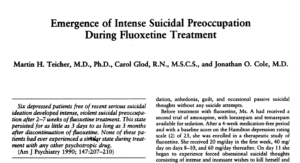
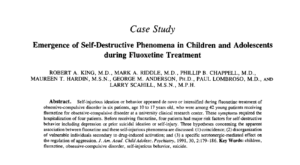

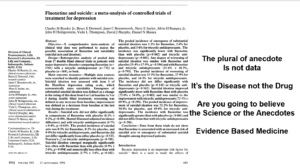




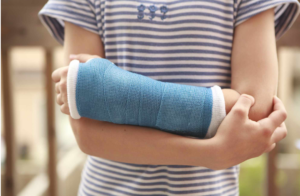

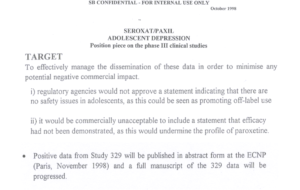
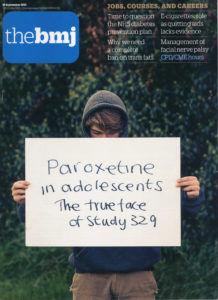

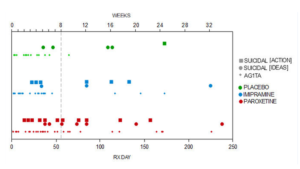
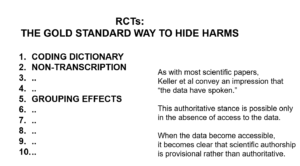


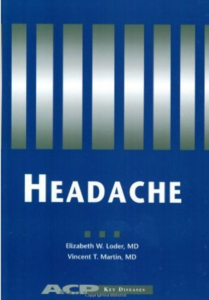
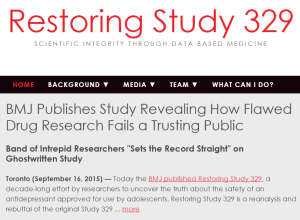

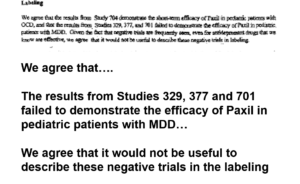
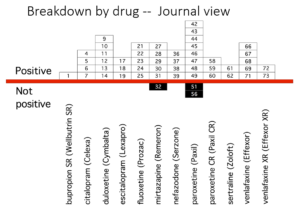
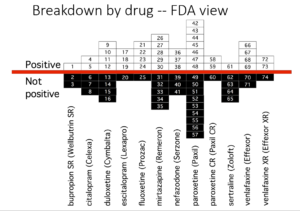
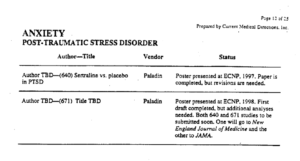

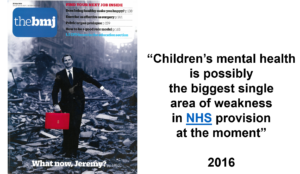
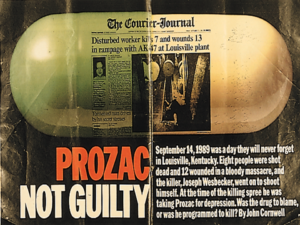
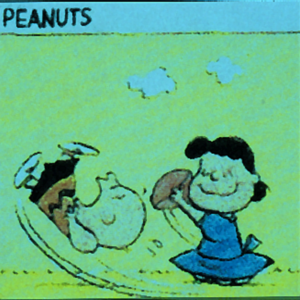
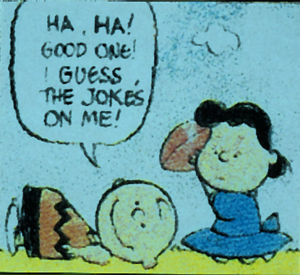

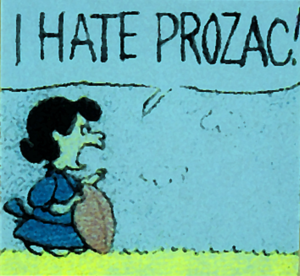
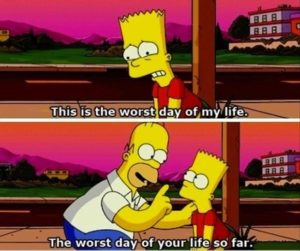
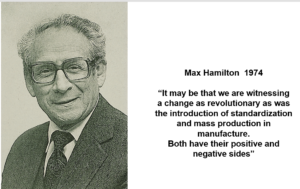
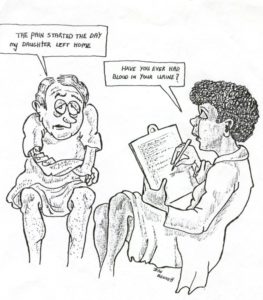
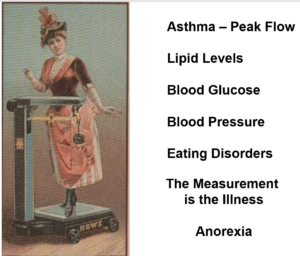

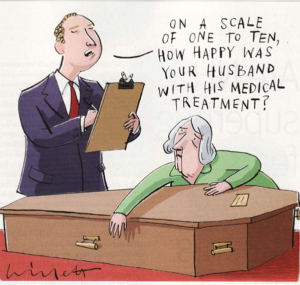
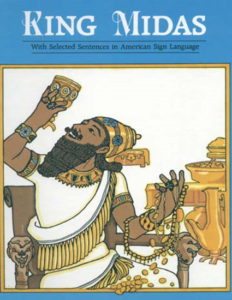
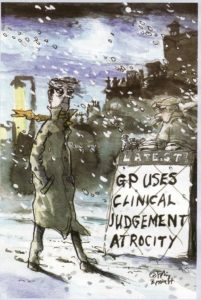
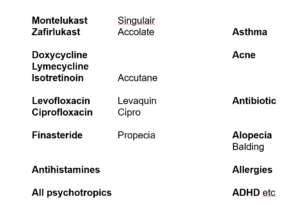
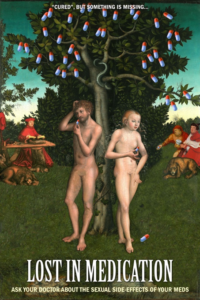

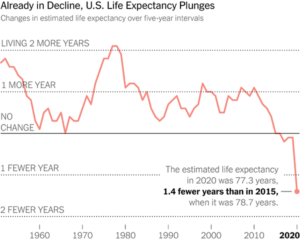


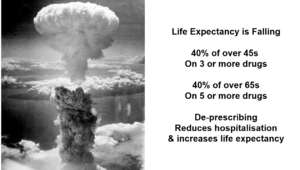



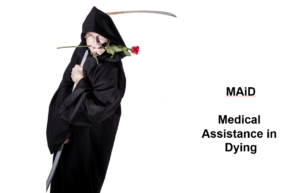





“These drugs have destroyed my life.”
This is one of the phrases I read numerous times after starting to research, back in 2007, to find out what was happening to me.
It’s been a long time and it’s still extremely difficult to raise awareness about the risks of these pills.
I gave up trying to explain that for 3 decades I was trying to know what was side effect, withdrawal symptom and what was me.
Long story short: it took me two years to taper Effexor (300 mg).
All withdrawal symptoms I know not from reading but for feeling them
I did it all by myself for in those days not a single Brazilian psychiatrist knew how to do it.
I went back to 75 mg. I could function and getting rid of two pills was of great help.
Seroquel was possible to withdraw from 600 mg to 200 mg.
And, ironically I still take Clonazepam which was the reason I went to a psychiatrist to ask for help to withdraw.
He put me on the first antidepressant.
It all started: side effects were “treated” as mental illness.
Clonazepam, now I see, was responsible for panic attacks.
I became agoraphobic.
I’m again agoraphobic. I started paralysing whenever I was on the curb to cross the street.
It was in 2019 – the year my father passed away.
I kept asking for help when necessary.
I could live with that and I’m doing psychoanalysis.
Back in 2020 I had to make some changes in my life. I became anxious and agoraphobic.
I got better in 2021 and till August 2022 I was great.
Now it’s all back. I’m numb, not motivated and can’t go out any longer for I started paralysing in the sidewalk.
I’m agoraphobic again.
I’m older now and I don’t trust the psychiatrist that’s giving me the necessary prescription to buy these drugs.
And he’s one of the best I’ve seen for at least he recognizes withdrawal symptoms and side effects.
But he proposed to taper Effexor taking half the dose. I know it’s impossible and I don’t want to feel all those symptoms again.
Luckily I can focus on some issues and I occupy my brain with other subjects.
But if I stop and take a look at myself… I’m not very happy, proud of even recognize the person I was.
I’ve been living these ups and downs for too long and once again I ask: is it me or these drugs have any part in it?
People keep telling me “You have to talk to a psychiatrist.”
Nope.
(Press: “Submit Comment” – we feel so ashamed.)
This has to be a first in the cause and effect White Coat Storm where a significant Professor with significant credentials, father of a recently deceased child, meets with another significant Professor with significant credentials, but who himself needs little convincing as he has done his own lay research and come to his own conclusions.
But, Dan will not have been briefed in detail as to what goes on “when the books are cooked”.
For the first time in medical history of adverse drug reactions, and so recent it has hardly cooled, there is this opportunity for the case of Dexter Johnson to hit the history, to say “just a minute, here”, something with Fluoxetine has gone terribly wrong. So wrong, in fact, that “or a BC doctor’s name in 2021.”
recovery&renewal Retweeted
Dan Johnson
@DanJohnsonAB
Replying to
@jill_d35
Very interesting history. I’ll pass it on to students.
“…One has to wonder whether the 1990s Defeat Depression Campaign1 (DDC) has inadvertently resulted in a long trail of chronic illnesses due to underestimation of the risks of SSRIs/SNRIs.”
“Dexter’s lack of scientific knowledge also made him a willing subject for trying antidepressants. He was 15, and not in charge of ensuring science-based medicine or patient safety.”
A fantastic move by the Amazing Dan Johnson to afford us, in Lethbridge, Alberta, yet another insight in to the calamitous demise of Dexter, who joins the ranks of people, like Stephen O’Neill, a series well-documented, “or a doctor’s name” …
Thanks. I try to be objective, and assume that even fatal mistakes might have been well meaning. We even need to forgive Dexter for thinking that sadness would be better treated by a secret miracle drug and go away, rather than reveal it to a counsellor or the dad he always trusted. And it took a while but I think the dad needs forgiveness for not guessing something was up. I was ignorant and had never even heard the word fluoxetine. But even some parents who are told lose their children – they need our sympathy. The duty to warn should never be minimized.
Dear Dan,
We are in awkward territory.
Some of us tried to sue GlaxoSmithKline and tried to sue for nigh on over a decade which fell flat on its face as a judge threw it out at the last call.
Some of us tried to sue our doctors but that call fell flat as it was not deemed that doctors were aware of a problem.
Doctors not aware of a problem and Pharmaceutical Companies who hold all the cards.
I wonder if you have read Malcharist written by Paul John Scott; its a terrific read and can make even the most implausible, seem plausible.
I, um, wrote this a while ago, and was thrilled with Billiam James graphics…
https://samizdathealth.org/children-of-the-cure-sends-shock-waves/
Equally, The Zyprexa Papers by Jim Gottstein.
https://samizdathealth.org/
from the house that Samizdat built.
https://samizdathealth.org/a-rollicking-good-read-that-gives-pharma-a-run-for-its-money/
You are obviously a person who attracts definitive material like a magnet, and so, thanks for not hiding under a bushel.
You are now entering a new world, Godspeed, Dan…
I will find and read these things,
“The Massachusetts mom charged with murdering her three children and then jumping out a window was on a “staggering” cocktail of prescription medications for anxiety and depression, her lawyer said Friday.”
“Among the drugs found in her system were Ambien, Klonopin, Valium, Prozac, Lamictal, Ativan, Remeron, Seroquel, and trazodone.”
Joe Dwinell, writing in the Boston Herald
https://www.bostonherald.com/2023/02/03/duxbury-mom-to-be-arraigned-tuesday-meds-trapped-her-in-a-living-hell-lawyer-tells-herald/
How can any human being possibly need that many brain-altering drugs?
This is an industry that careening completely out of control.
Which brings us nicely to Marilyn Lemak…
A presentation at an appeal on June 15 for clemency for Marilyn Lemak
https://www.youtube.com/watch?v=PiC4T5zsE48
“Zoloft fingerprints all over it” …
“The jury found GlaxoSmithKline guilty” …
Pertinent follow-up, to Lecture in Lethbridge, Alberta…
The coverage of medical injuries in company trial informed consent forms
David Healy 1, Augusto Germán Roux 2, Brianne Dressen 3
https://pubmed.ncbi.nlm.nih.gov/36710689/
2.Study 329
From 1994 to 1998, SmithKline Beecham conducted Study 329, a trial comparing paroxetine (Paxil) to imipramine and placebo in depressed minors [1].
The consent form for participants stated [4]:
If I become ill or injured as a result of participation in this clinical study, medical treatment will be provided, and the reasonable cost of such treatment will be paid by SmithKline Beecham.
The trial report published in 2001 claimed an efficacy and safety for paroxetine [5]. There were suicidal events on paroxetine in this trial, but the implication was that paroxetine had not caused them. Prior company internal assessments and subsequent independent review did not support these claims for efficacy or safety [1,6]. The publication of the 2001 article, claiming efficacy and concealing life-threatening problems, boosted the sales of Paxil [7].
Brook Jackson
@IamBrookJackson
Augusto Roux
@RouxAugusto
·
18h
I share with you an article that was published by Dr. David Healy, Brianne Dressen and me as authors, We explain how pharmaceutical companies they made fraudand underreported our adverse effects,During clinical trials, had government review
https://content.iospress.com/articles/international-journal-of-risk-and-safety-in-medicine/jrs220043
In the case of drugs, as pointed out over twenty years ago, a sequestration of clinical trial data, especially data on harms, and the ghostwriting of trial reports which further conceals harms, puts everyone who later takes the drug in a state of legal jeopardy [28,29]. If participants in a trial have their injuries concealed, anyone else similarly injured, who seeks a legal or other redress, will face company claims that there is no evidence from their trials of a link between this injury and their medicine.
GSK personnel have stated under oath there are no adverse events that can be definitively linked to paroxetine [9].
‘something like slipping on a banana skin’ …
Good to know that tobacco helps people with OCD but back in the days when Google was not censured I found some articles about the benefits of smoking. One of them is Christopher Wanjek, author.
1. Smoking lowers risk of knee-replacement surgery
2. Smoking lowers risk of Parkinson’s disease
3. Smoking lowers risk of obesity
4. Smoking lowers risk of death after some heart attacks
5. Smoking helps the heart drug clopidogrel work better
I did a post about it in 2011
https://hellaheaven-ana.blogspot.com/2014/11/5-health-benefits-of-smoking-by.html?m=1
MAID: that’s outrageous.
Amazing Polly, a Canadian YouTuber, who had her channel removed a long time ago said that a law allowing 7 years old children to ask for euthanasia WITHOUT the consent of their parents was being considered.
Hard to believe but that’s the era we live.
I did a quick research now but it’s too hard to bare.
I left s comment yesterday but I did something wrong and “Your comment is awaiting moderation” didn’t appear.
There I go being very specific:
I’m agoraphobic again. The old panic attacks have ceased, it appeared after I was prescribed Clonazepam, I discovered that after a long time researching.
Klonopin’s side effects changed along the decades and once it appeared “panic attacks” as a side effect.
After taking numerous drugs I end up with Effexor 75 mg; Seroquel 200 mg, and, the irony, Clonazepam 2 mg.
I went to a psychiatrist to help me to get rid off Clonazepam and was prescribed the first antidepressant that caused side effects that was prescribed as mental illness.
I’ve been on a see-saw of agoraphobia and now it’s harder for instead of panic attacks I paralise.
It’s impossible to keep walking.
I was feeling fine till August and all of a sudden it came back.
I’m feeling unmotivated to do anything but I’m not depressed. I’m doing psychoanalysis and she agrees.
As always people say I must talk to a psychiatrist.
I don’t know if these drugs I’m taking for so long can have any connection with this symptom.
It’s very hard to know and finding a good psychiatrist who accepts my views and fears is hard.
The only thing I can do is to focus on topics I research. Occupying my mind with other things than myself for if I focus on me: distress, anxiety, self-incrimination, shame …
Now I have to have the strength to click “Submit Comment” we all feel ashamed…
“Emotional numbness”.
That’s it! I’m watching David’s interview with Witt Doerring and I never payed attention on this side effect. “Anhedonia”.
It fits all I’m feeling and take reason I’ve been on this constant struggle since I started the wonderful world of psychiatric drugs.
Ok. It seems I’ll have to make an extra effort to go down the stairs to clean the shoes.
There are some interviews that are not on David Healy’s channel. They should all be there.
Dear Dr. Healy,
Thank you so much for sharing this very valuable information and video so that we can share it with others to get the word out. Dan is a friend of mine. I am sickened by what happened to Dexter, who was clearly a stable, talented, loved, not-mentally-ill youth before Prozac.. I became acquainted with Dan when I saw his post on a Prozac harm support group site last January shortly after Dexter died. Since my family member’s tortured hell began with Prozac and other antidepressants, I quickly replied to Dan that yes, Prozac CAN and does cause suicide. In fact, one of my family member’s physicians was David Dunner, M.D., who helped get Prozac through the FDA. A big Prozac plaque hangs over his desk. My family member survived – but the story is harrowing, and irrevocable losses occurred in the process. My sister is dead because of these drugs, as well as my brother-in-law. Neither of them had any sign of “mental illness” before starting an antidepressant. I am working with other survivors and parent who lost children to stop this egregious mass murdering in the name of medical care. It is life-long work.
Dawn Sonntag, D.M.A.
Olympia, Washington
Thanks for all your efforts, Dawn, and your strength. I was, and am, very sorry to find out about the impact of these poorly tested and ill-advised medications on your family.
Re: updated edition
the updated book 7th Edition
The book is marketed to health workers but it would be good if it was more widely publicised It Might even prevent some of the harms and deaths due to inevitable lack of knowledge by most of us before being sensitized for differing reasons and lack information given by health workers whatever the reason
Psychiatric Drugs Explained Paperback – 20 May 2022
by David Healy MD FRCPsych (Author)
4.8 out of 5 stars 6 ratings
________________________________
See all formats and editions
Kindle Edition
£16.39Read with Our Free App Paperback
£27.99 2 Used from £26.7218 New from £26.10
Psychiatric Drugs Explained offers a wealth of evidence-based
information on psychiatric drugs in an easy-to-use format that can be
quickly referenced in the clinical setting.
Written by internationally recognised author Dr David Healy, the book
provides a comprehensive review of drug effects, action and
side-effects. There is an emphasis on the lived experience of
patients, providing the reader with a sense of what the adverse
effects of drugs might feel like to those who use them.
A reader-friendly approach and clear layout, with information
organised by disorder, make this popular title accessible and useful
not only to nursing staff, but to all members of the multidisciplinary
team.
Quick reference guide suitable for all members of the multidisciplinary team
Helpful boxes on user issues make potential complications easy to spot
Distinctive, reader-friendly style helps the reader understand the
benefits and impacts of psychotropic drugs
New topics include management of dependence disorders, stimulants and
drugs for children, cognitive impairment and sleep disorders
The only book with detailed coverage of the sexual side effects of
psychiatric drugs and the abusive prescribing of prescription drugs
Read less
Dr. Healy’s talk includes very important history that anyone interest in antidepressants and psychiatry should read.
There are a few references and notes in the upper-right link about SSRI. More could be added.
https://amazingdexterjohnson.com/
See also the latest talks from David Healy.
Qu’Ils Mangent Des Médicaments
Let them eat medicine.
https://davidhealy.org/quils-mangent-des-medicaments/